The best paintbrushes for oils

There's plenty to consider when choosing the best paintbrushes for oils, but one thing's for sure; artists certainly end up with a big selection.
When picking a paintbrush, you'll be assessing its shape and size, but also more complex aspects. How will the handle length affects the expression of the brushstroke? Will the hair type hold enough paint, be the optimal firmness and hold shape? We've considered all of these elements, plus some practical considerations like cost and availability, to come up with our picks of the best paintbrushes for oils.
Once you've chosen, it's important to take care of them. Our instructions for keeping your brushes clean can help your brushes live longer, and our oil painting tips and techniques grant further insight. If you're looking for a full complement of kit, we've picked best oil paint supplies overall and some of them are already on offer in the Black Friday art supplies sale.
The best paintbrushes for oils
Why you can trust Creative Bloq
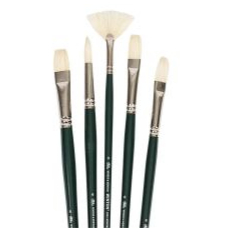
The best oil paintbrushes for students and beginner painters
+ Shape holds up
+ Good size range
- Looser shape
- May shed
This range includes easy-to-use, firm and affordable starter brushes in a variety of shapes and sizes - even heftier round brushes. Though they don't hold the tightest shape, they maintain it far better than cheaper brushes. We've encountered the occasional dropped bristle, but less so once used a few times.
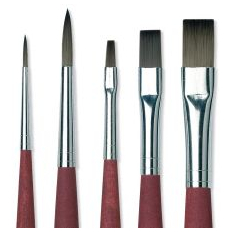
The best synthetic oil paintbrushes for students and beginners
+ Soft bristles
+ Good quality
- Holds less paint
- Less crisp shape
This student-quality range of synthetic paintbrushes are slick and lay down paint smoothly, with long handles suitable for working in oils. They won't paint like natural brushes, or form a point as sharp as pricier synthetics, however, they're good quality at their price point, don't shed, and hold shape well.
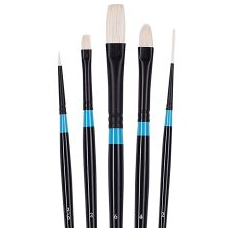
The best oil paintbrushes for painting outdoors and heavier use
+ Excellent quality
+ Very durable
+ Firm
- Quite expensive
- No large rounds
These firm, high-quality synthetic brushes with thick bristles are almost as stiff as hog paintbrushes, though without the scratchy feel. They hold paint well, keep their shape, and don't drop bristles. The black ferrules, intended to prevent reflections and glare, would be handy for anyone working outside or in filming situations.
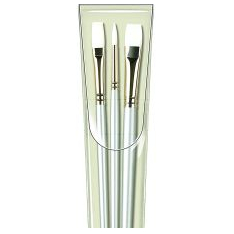
Best oil paintbrushes for versatility and value
+ Excellent value
+ Very responsive
+ Tough to clean
- Stain easily
- US availability
These synthetic brushes come in a decent range of sizes and perform surprisingly well for their cost. They're responsive and softer than a hog brush but firm enough to retain their shape. They hold paint well but stain easily, and the absorbent bristles draw the paint up to the ferrule.
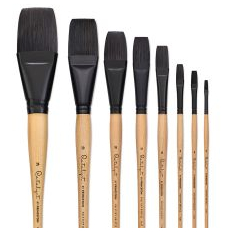
Best oil paintbrushes for really thick paint and impasto
+ Good for pushing
+ Very durable
- Acquired taste
These brushes don't hold paint well, but are well-suited to working with thickly applied oil paints. They're great at pushing paint around and won't clog up, making them easier to clean. They are stiff and resist bending, but have enough flexibility to make them more brush-like than other impasto tools.
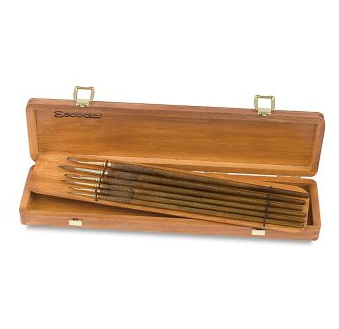
Best oil paint brushes for fine details and precision
+ Fine lines
+ Holds paint well
- Expensive
- High-maintenance
- Limited UK availability
These high-quality sable brushes produce an incredibly fine point and hold paint well even at small sizes. They are best used for thin applications rather than pushing and are aimed at experienced artists. The handles' length and weight make it easy to balance expressive marks with accuracy.
Daily design news, reviews, how-tos and more, as picked by the editors.

Josephine Watson (@JosieWatson) is an experienced tech journalist with experience writing on a variety of topics from pop culture to gaming and even the energy industry. She is the Managing Editor of Lifestyle on CreativeBloq's sister site, TechRadar, overseeing the Lifestyle vertical (Cameras, Home and Wellness) and How-To's, where she can be found writing across multiple channels including computing, software, homes and gaming.
- Georgia CogganEditor
